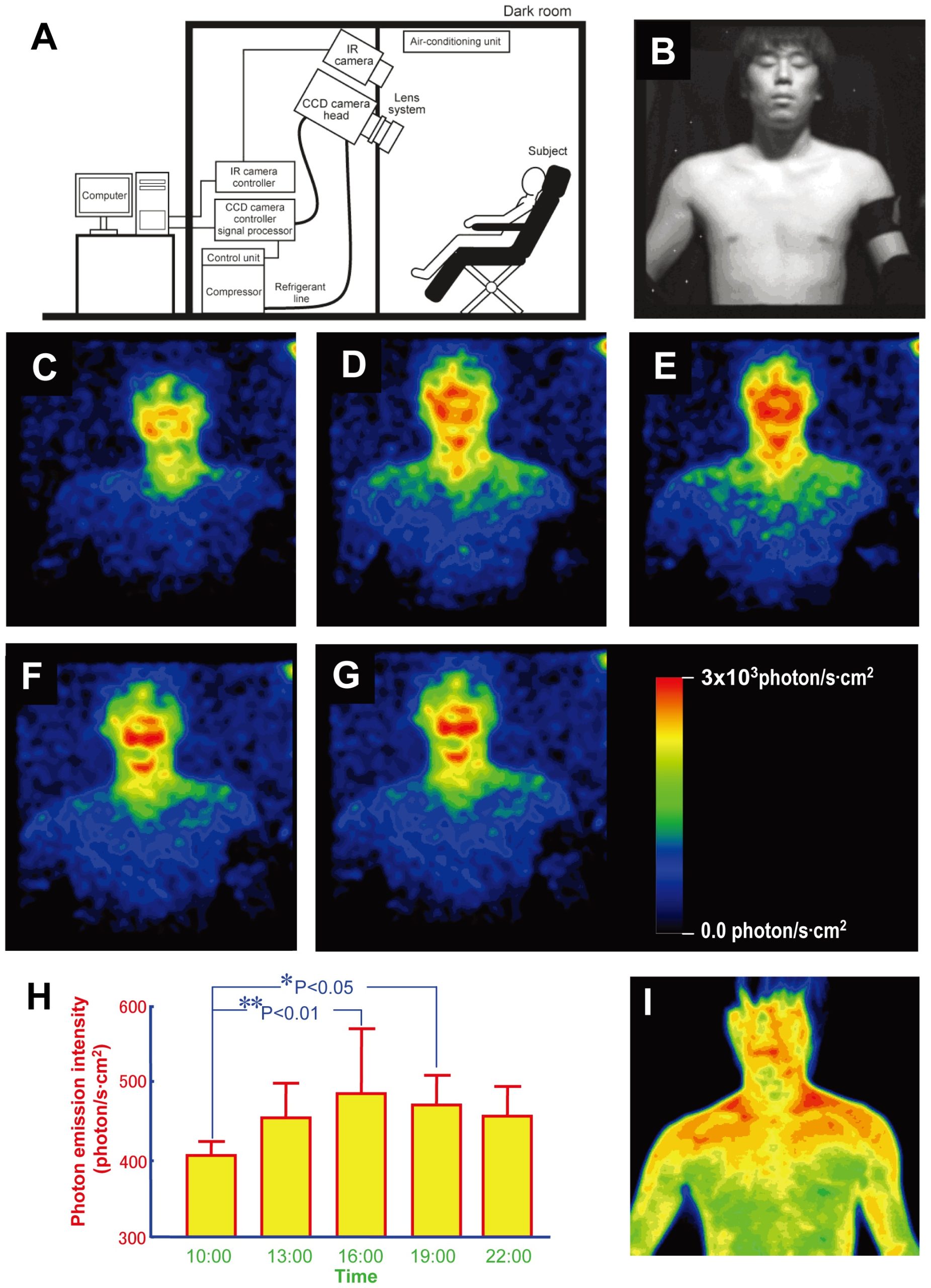The human body glows. This might sound like science fiction, but it results from ultraweak biophoton emission imperceptible to the naked eye.
The study stated that the faint light our bodies emit—called biophoton emission—comes from the activity of tiny particles called free radicals during the energy-making processes in our cells. These free radicals interact with fats and proteins, creating excited molecules that produce the observed glow when they react with substances like fluorophores.
A group of researchers captured this glow using cutting-edge technology and found photons move in a way which matches the body’s natural circadian rhythm.
In a study published in PLOS ONE, researchers employed a specialized imaging system featuring a cryogenic charge-coupled device (CCD) designed with a cold-sensitive sensor for capturing pictures. Operating at low temperatures, this camera minimizes electronic noise, enhancing sensitivity to capture faint light signals.
Usually, researchers use this camera to capture high-quality images of objects in space. However, a group of scientists used this cutting-edge technology to capture the subtle glow emitted by the human body. Their findings revealed that the movement of photons in this emitted light aligns with the body’s natural circadian rhythm.
“We successfully imaged the diurnal change of ultraweak photon emission, revealing that the human body directly and rhythmically emits light,” the researchers stated. “This emission is intricately linked to changes in energy metabolism, offering a new perspective on our body’s inner workings.”
While bioluminescence is commonly associated with organisms like fireflies and jellyfish, this study demonstrates how virtually all living organisms—including humans—emit extremely weak light spontaneously.
In the past, obtaining images of biophoton emission required over an hour of acquisition time, making it impractical for studying physiological phenomena. However, advancements in the CCD camera and lens system now allow for clear images with a short exposure time, paving the way for in-depth analysis of biophoton emission patterns.
The study involved five healthy male volunteers, monitored in normal light-dark conditions with sleep scheduled from midnight to 7 a.m.
The researchers observed a clear circadian rhythm in the intensity of photon emission, which varied daily. Images revealed that photon emission from the face was higher than from the body, and the intensity varied throughout the day, peaking in the late afternoon.
The researchers explored the correlation between the light emitted by our bodies and the functioning of other body systems.
They found that cortisol—a hormone responsible for various functions, particularly in managing stress, regulating metabolism and influencing our daily sleep-wake cycle—followed a negatively correlated pattern to the photon emission, meaning that when the captured glow was brighter, our cortisol levels were lower.
This suggests a connection between our body’s internal clock, stress management and the light our bodies give off.
The study proposed that ultraweak biophoton emission originates from generating free radicals in energy metabolic processes. The emitted photons result from the interaction of these radicals with lipids or proteins, creating excited molecules. These molecules, in turn, react with fluorophores, leading to the observed biophoton emission.
The research sheds light on the intricate dance of free radicals and excited molecules within our bodies, revealing a captivating connection between our metabolic processes and the mesmerizing glow emitted by our skin.
In a world where we often focus on the visible aspects of health, this research unveils a hidden aspect of our biology, making the intersection of circadian rhythms, stress and metabolic processes more increasingly apparent.
This discovery expands our understanding of human physiology and sparks intriguing questions about the interconnectedness of our internal processes and the radiant light we unknowingly emit.
Studying biophoton emission opens up a new frontier in visually understanding the dynamic interplay between how our external world impacts our body’s internal mechanisms. It is a fascinating journey that challenges us to explore the depths of human biology and the mysteries within our own glow.
This newfound knowledge adds a touch of magic to how we see ourselves. As we explore the mysteries of our own glow, let’s uncover the surprises our bodies hold, revealing more to our story.






